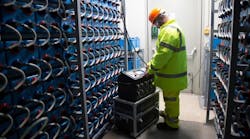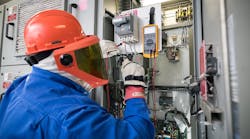Do you have written testing protocols set up for critical equipment? Suppose Bob the electrician responds to a call for help on a production line that went down. He’s got his trusty DMM with him. He knows to check for nominal voltage, to see whether the system has power. Suppose it does. Then what?
If Bob isn’t familiar with the system, he’ll have to locate the drawings for it and study them to figure out what to measure and what to expect.
Or will he?
Not at this plant. The maintenance department has set up a small information station at this line. Actually, it consists of laminated guides in the control cabinet for this line.
Bob finds the sheets that detail the measurement points and which measurements to expect. All of the points have a numerical label on the information sheets, corresponding to the same numerical label at the measurement point. The measurement points are often ports established just for that purpose. Bob doesn’t have to reach into the equipment to take the measurements.
Rather than have each responding electrician repeat the studying of drawings with every trouble call, the work is done once. This can shorten downtime by thousands of dollars a day. Note: if you think of downtime in dollars instead of in length of time, you more clearly see the importance of using methods such as this to reduce downtime.
This is just one example of how you can make measuring faster, safer, and less prone to error. For critical equipment, take this idea as far as is practical.




